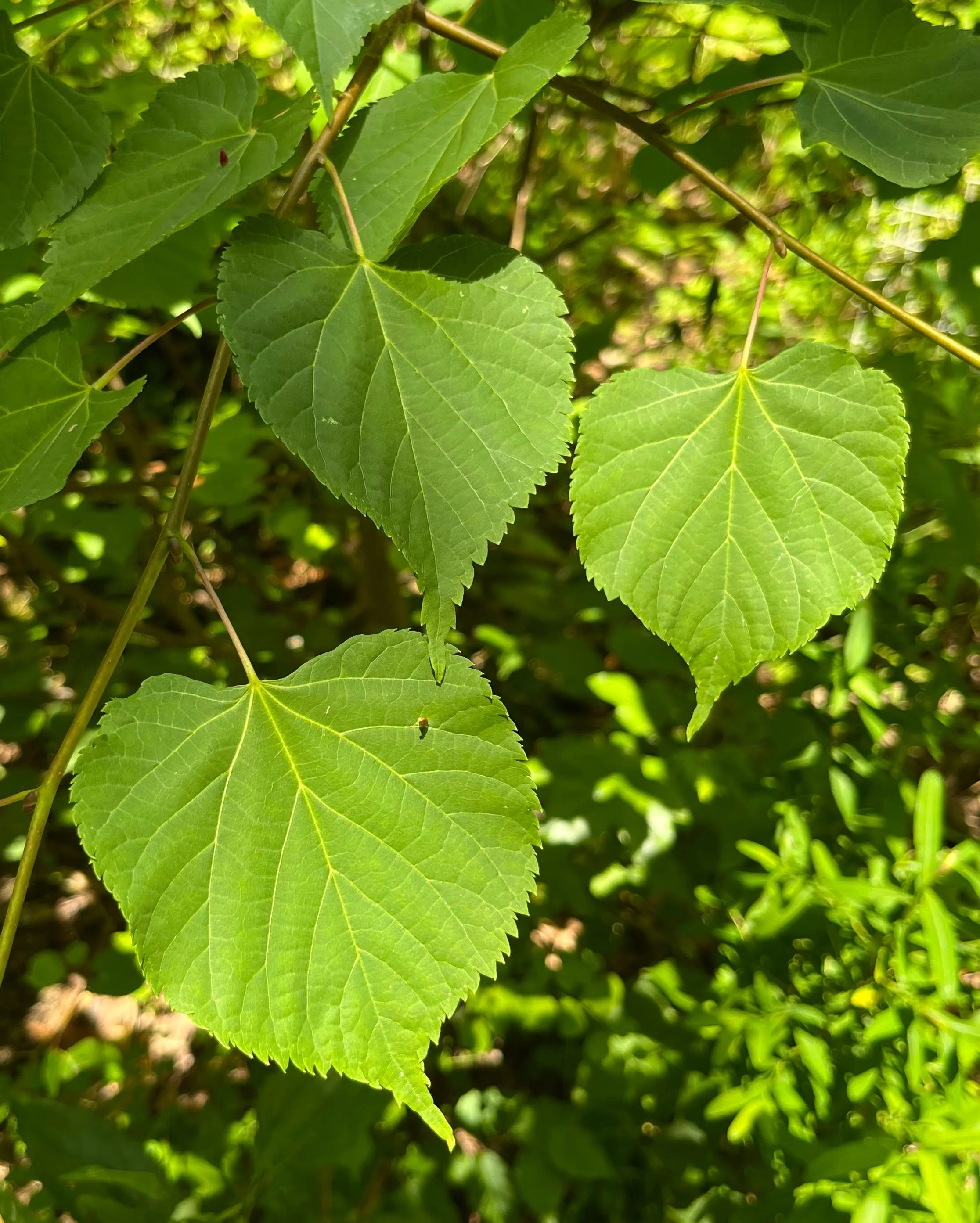American Basswood/ American Linden
Latin name: Tilia americana
Etymology: The Latin genus name Tilia is cognate to the ancient Greek word ptelea (meaning ‘elm tree’ or ‘black poplar’) and ultimately to the proto-Indo-European ptel-eia meaning ‘broad’ which might refer to the leaves. The species name americana refers to the origin of the species.
Family: Malvaceae (Mallows)
Origin: Eastern North America
Native habitats: Rich uplands on mid-slopes in mixed deciduous forests. It is sometimes found in swamps.
Description: American Basswoods have a height of between 50-80 feet and a diameter of 2-3 feet. Leaves are heart-shaped with finely toothed margins and uneven bases and are hairless beneath. They are alternately placed and measure between 5-10 inches. The bark is dark and shallowly grooved when mature but often smooth grayish on the upper parts. Buds are green to bright red, pith is continuous. Flowers are yellow and fragrant and appear in long drooping clusters between June and August. Fruits are small pea-sized nutlets clustered beneath large leafy wings that act as spinning parachutes upon opening and can be found between August and October.
Similar species: No other species is likely to be confused with American Basswood.
Wildlife Value: American basswood trees attract lightning bugs and are a larval host plant for red-spotted purple and mourning cloak butterflies. Its flowers are very attractive for bees and other pollinators. The seeds are eaten by chipmunks, mice, squirrels, and songbirds while rabbits and voles eat the bark.
Uses: The tough fibrous inner bark of this tree was used by native Americans to make ropes and woven mats. The flowers can be used for a tea which is supposed to alleviate cold-symptoms and enhance sleep while they also produce a strongly flavored honey. The soft and light wood and is used for carving or making food boxes, yardsticks, furniture, and pulpwood.

